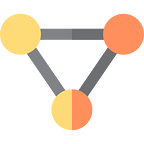What is Classification In Data Mining?
Classification is the activity of sorting objects into categories. Data mining uses classification to divide data sets into different groups or classes based on some predesignated characteristics or attributes, in order to analyze the data in each class separately. Classification allows decision-makers to effectively deal with large databases by essentially reducing the dimensionality of data for easier analysis.
In data mining, classification is the process of categorizing a data set into discrete groups or classes. In other words, it is a technique that enables us to predict if an observation belongs to a particular class/category or not based on training observations that have already been categorized, thus determining its properties useful for this categorical prediction.
A simple example is to determine whether a certain email is a spam or not spam. At first, we need to specify a set of rules that tells us whether the email will be spam or not i.e., if it contains words like “lottery”, “prescription” etc then it must be spam else, not spam. An algorithm can learn from these rules and classify new unseen emails as spam/not spam accordingly. This whole process is called Classification in Data Mining.
In machine learning, where there are generally two types of problems — supervised and unsupervised learning, the classification is a supervised learning technique. In this technique, both input and output variables are categorical i.e., taking on different values from a certain set of classes.
To solve this problem, we need to divide all possible values in the target variable (i.e., spam/not-spam our example ) into various groups. For e.g. if we have an input variable that takes three different values then the groups will be with 0, 1, or 2 value(s).
The most important part while solving this problem is to decide how many classes are there in our target variable and what are they? This is decided based on data analysis. If the values are too many, it becomes difficult for machine algorithms to find patterns automatically. Hence, deciding the number of classes also becomes very crucial before starting to solve this problem.
Here, each record has only one response i.e., either spam or not-spam because there is no concept of multiple labels assigned per record unlike supervised learning problems involving continuous target variables (e.g., regression).
The first step to solving this problem, as mentioned earlier, is to decide which variable should we predict and how many classes can we come up with.
We have a target variable “spam” having only two classes as mentioned above. Now, we plan to predict the target variable. This means that for each record in the dataset, we want our algorithm to predict whether the record belongs to class ‘spam’ or not. So, we will end up predicting 2 different sets of outcomes (i.e., spam and not spam), and each set would contain all records corresponding to that particular value (class). That’s it!! We now know how many classes do we need for our prediction task. The next part is to determine how many classes can we come up with.
For unsupervised learning, the algorithm finds patterns in the given data without any pre-labeled target variables. It finds similarities or groupings in the data based on some predefined criteria. It groups similar items together forming clusters of similar items. These are called clusters of near similarity. Example: If you are given a dataset containing information about different fruits then the algorithm would not try to predict anything nor will tell what fruit is what but it will divide all fruits into groups based on their physical properties like color, size, shape, etc. which makes them seem similar to each other and it would name these groups as blueberries, plums, etc. These groups of similar items, together form a model which predicts accurately and more efficiently.
Classification is one of the most important tasks in data mining. It may be defined as the process of assigning predefined class labels to instances based on their features or attributes. One must not mix classification with clustering. One key distinction between classification and clustering is that classification involves labeling items according to their membership in pre-defined groups. As an example, suppose you are using a self-organizing map neural network algorithm for image recognition where there are 20 different kinds of objects. If you label each image with one of these 20 classes, then the classification task is solved. On the other hand, clustering does not involve any labeling. Assume that you are given an image database of 20 objects and no class labels. Using a clustering algorithm to find groups of similar-looking images will result in finding clusters without object labels.
Originally published at https://protonautoml.com on August 19, 2021.
